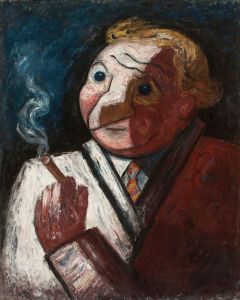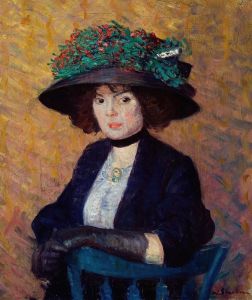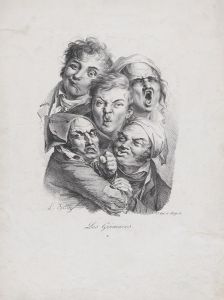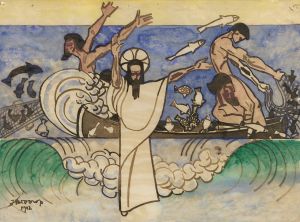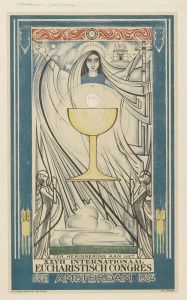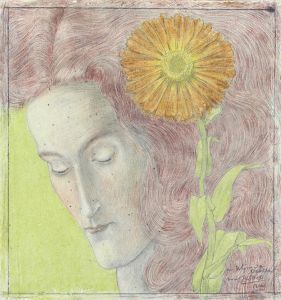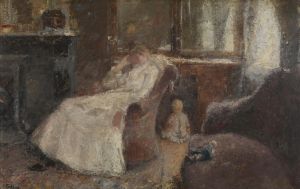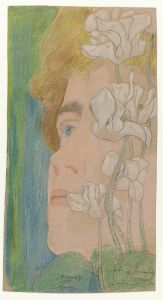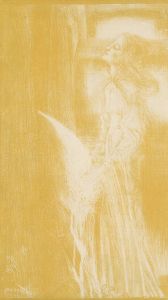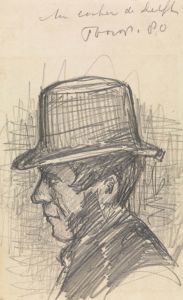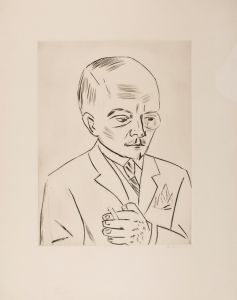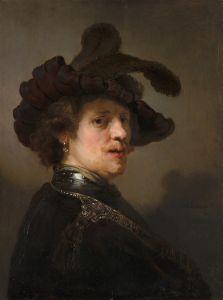
Head of a Woman
A hand-painted replica of Jan Toorop’s masterpiece Head of a Woman, meticulously crafted by professional artists to capture the true essence of the original. Each piece is created with museum-quality canvas and rare mineral pigments, carefully painted by experienced artists with delicate brushstrokes and rich, layered colors to perfectly recreate the texture of the original artwork. Unlike machine-printed reproductions, this hand-painted version brings the painting to life, infused with the artist’s emotions and skill in every stroke. Whether for personal collection or home decoration, it instantly elevates the artistic atmosphere of any space.
Jan Toorop was a prominent Dutch-Indonesian artist known for his contributions to Symbolism and Art Nouveau. His work often reflects a blend of Western and Eastern influences, which is a testament to his multicultural background. One of his notable works is "Head of a Woman," a piece that exemplifies his unique style and artistic vision.
"Head of a Woman" is a drawing that showcases Toorop's skill in capturing the human form with intricate detail and expressive lines. The artwork is characterized by its delicate and flowing lines, which are typical of Toorop's style during his Symbolist period. This period was marked by an emphasis on mystical and emotional content, often conveyed through symbolic imagery and a distinct linear quality.
The subject of the drawing, a woman's head, is rendered with a focus on her facial features and hair, which are intricately detailed. The lines used in the drawing are both fluid and precise, creating a sense of movement and life within the static image. This technique reflects Toorop's ability to blend elements of realism with more abstract, decorative elements, a hallmark of his work.
Toorop's use of line in "Head of a Woman" is particularly noteworthy. The lines are not merely outlines but are used to convey texture and depth, giving the drawing a three-dimensional quality. This approach is indicative of Toorop's broader artistic philosophy, which sought to transcend mere representation and instead evoke deeper emotional and spiritual responses from the viewer.
The influence of Art Nouveau is evident in "Head of a Woman," particularly in the stylized treatment of the woman's hair and the overall composition. Art Nouveau was characterized by its use of organic forms, flowing lines, and an emphasis on harmony and beauty, all of which are present in this drawing. Toorop was one of the leading figures in introducing Art Nouveau to the Netherlands, and his work played a significant role in popularizing the style in the region.
Jan Toorop's multicultural background also played a role in shaping his artistic vision. Born in Java, Indonesia, Toorop moved to the Netherlands at a young age. This blend of Eastern and Western influences is often reflected in his work, which combines elements from both cultures. In "Head of a Woman," this synthesis can be seen in the harmonious balance of form and line, as well as in the subtle emotional depth conveyed through the subject's expression.
While "Head of a Woman" is a relatively simple composition, it is a powerful example of Toorop's ability to convey complex emotions and ideas through his art. The drawing invites viewers to contemplate the inner life of the subject, encouraging a deeper engagement with the work. This focus on the psychological and spiritual dimensions of art is a key aspect of Toorop's legacy and has cemented his place as a significant figure in the history of modern art.
In summary, "Head of a Woman" by Jan Toorop is a masterful drawing that exemplifies the artist's skill in blending realism with symbolic and decorative elements. Through his use of line and form, Toorop creates a work that is both visually striking and emotionally resonant, reflecting his unique artistic vision and his contributions to the Symbolist and Art Nouveau movements.






